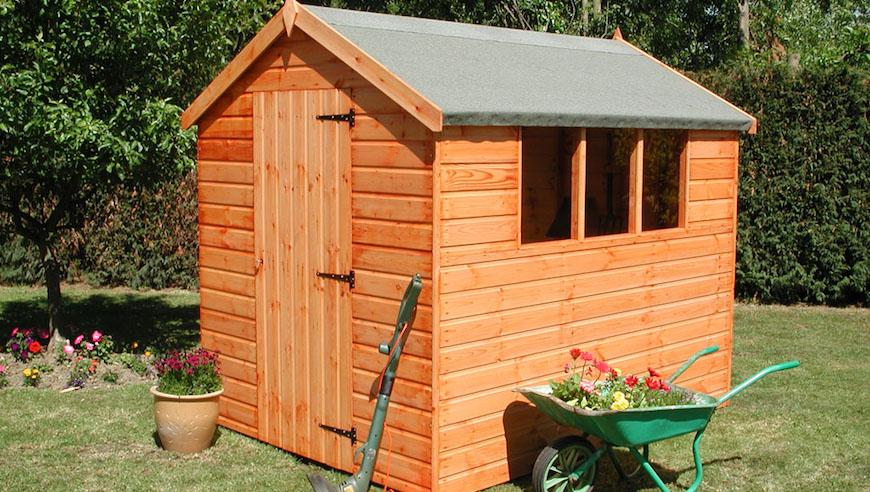Garden Shed Installation Cost
Last updated 26th May, 2020
Trying to find out how much it costs to build a shed? In this article we look at shed assembly prices for different types and sizes of shed. This makes it easy for anyone to calculate how much their new shed will cost them.

How Much to Build a Shed?
The average cost of getting a handyman to build a garden shed is typically around £600 for a 6x4 foot shed and should take around 1-2 days to build. A larger 12 x 8 foot shed on a solid concrete base will take 2-3 days to build and will cost on average around £1200. The cost will vary depending on the material your shed is made from, the design, and your location.
Tradesmen often charge around £150-£200 a day and usually have a minimum rate of £100 for a few hours work. Labour rates will often vary depending on where you live and will impact the price. Extra time may be needed if the shed requires a solid foundation to be built, typically a few inches of cement or concrete slabs.
Below are some estimated costs of hiring a tradesmen to build different shed sizes including laying a concrete foundation or concrete slabs:
Shed Assembly Prices
| Shed Size | Avg. Cost | Duration |
|---|---|---|
| 6ft x 4ft | £600 | 1-2 days |
| 8ft x 6ft | £800 | 1-2 days |
| 12ft x 8ft | £1100 | 1-2 days |
Cost Breakdown
Individual costs for fitting a 8ft x 6ft garden shed - Total Cost: £800
Materials
£520
Tradesmen
£280
Waste Removal
£0
What the job entails
Garden sheds are a great way of keeping your garden equipment and tools safe and secure, but can also serve as a summerhouse, a workshop or even an office. Garden sheds are practical and useful additions to your garden, helping you to make the most of the way you use your outdoor space. In order to choose the right shed to fit your requirements, you need to consider what size of shed you need, consider what you’re going to store in it and how you are going to use it.
It’s best to measure the space you’ve got available for a shed in your garden before buying, but if in any doubt, opt for a slightly larger shed, too much space is always better than too little! The majority of sheds require assembly on site and you’ll usually need at least two people to build a shed up safely. All sheds require a foundation or base that is sound and level. Make sure you don’t place the shed too close to any fence or walls, leave enough space to paint/treat/stain the timber to prevent rot.
If you plan on using the shed as a workshop or office, you’ll probably need to have mains power installed, do not simply use a trailing extension lead plugged into a power socket inside the house, that is asking for trouble! You will require a professional electrician to install safe and weatherproof power.
The most important consideration when choosing a garden shed is the size, this of course is often dictated by the size of your garden and the available space, but always try to buy the largest shed possible. The main reason being you will quickly find that the garden shed will soon fill up with all the stuff you have and over the years you will no doubt collect more, pretty soon the shed will be full of clutter making it difficult to access the tools you need.
Unlike other garden buildings, a garden shed or workshop is best placed out of the sun so that it does not too hot. Another tip for good location is to place the door of the shed near the garden path to avoid traipsing mud into the shed during bad weather. Try and avoid having trees or shrubs overhanging your new shed if possible as this can cause leaks or damp over time. If this cannot be avoided, then the addition of gutters can help. If you can always raise the shed up off the ground and allow air to circulate underneath the floor.
Garden sheds are usually either wooden or metal, though plastic is becoming more popular. Metal sheds are easy to assemble, more secure, and can come in an array of pre-painted colours. If installed correctly a metal shed can do the same job as a wooden one, often at a lower cost over the years due to the little maintenance required. On the other hand, wooden sheds are usually more aesthetically pleasing, cheaper to buy initially and warmer. Plastic sheds are cheap much lighter than wooden and metal sheds, which makes them easy to move around. On the downside it also makes it much easier for them to blow around in high winds!










